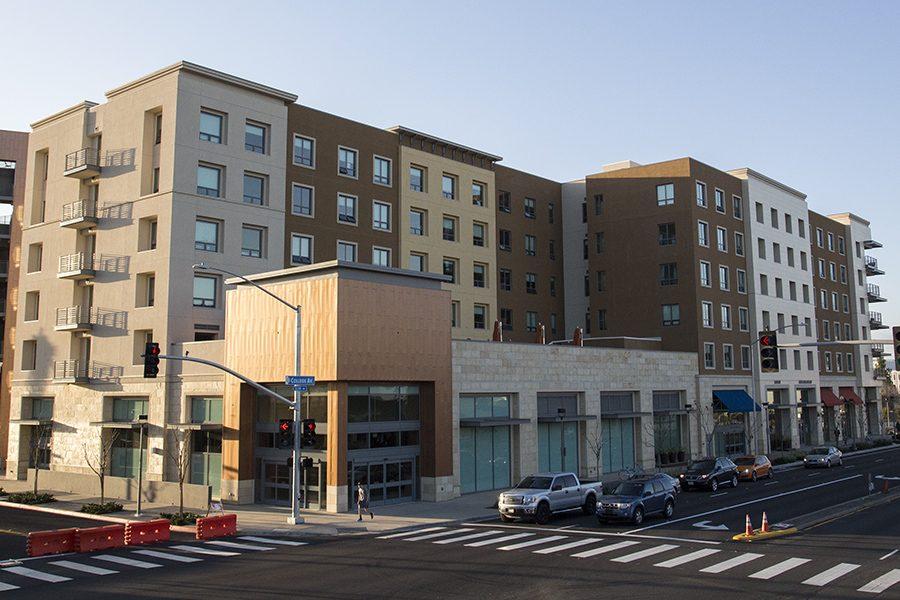In a Feb. 27 university update, executives of the university detail future plans for San Diego State including hiring new faculty, designing and building new facilities, and creating and implementing new student-success programs.
The success programs include assisting seniors in taking leaves of absence, increasing the number of students participating in learning communities and peer mentoring, and the recently developed SDSU Sophomore Success Program.
The program is an immersive experience designed to accommodate sophomore students who are from outside of the SDSU service area.
The update reads “students are in SDSU’s local admission area if he or she graduates from a high school in San Diego County located south of state route 56 and extending eastward, or a high school in Imperial County.”
Associate Vice President of Student Affairs Christy Samarkos said research shows students who live on campus are more engaged, more successful and graduate faster than those who do not.
“The program is a strategic step toward ensuring that all students are engaged, prepared, and well positioned to finish in four years,” she said.
The program is set to include career counseling, a requirement for sophomore students from outside San Diego to live on campus, and a focus on increasing sophomore students’ participation in high-impact practices, according to SDSU NewsCenter.
Samarkos said students will be exposed to engagement in a variety of experiences designed to support and enhance their second year.
“These experiences will include opportunities to engage in programs that national and local data indicate are critical for success in the sophomore year such as focused academic advising, career assessments and preparation for internships, financial literacy, mentorship with faculty and community service,” she said.
While the program aims to aid sophomores in transitioning further into college and adulthood, students like social work sophomore Marlene Martinez said the program is going to hinder students from being able to properly grow.
“Honestly, the school is still treating us as freshman with this program and holding our hands by doing this,” Martinez said. “No matter if you’re transitioning from freshman to sophomore off-campus housing or sophomore to junior off-campus housing, there is always going to be a period of difficulty for transitioning from on to off-campus housing.”
Martinez said that there are better ways to ensure that sophomores are on a positive track academically.
“If they want to make sure sophomores are successful, it doesn’t start with limiting their housing choices, It starts with having transitionary classes, for instance,” she said.
Undeclared sophomore Janae Newton said the new program is good for students and will help them further develop social skills and stay goal oriented.
“Having another year to network and meet new people will be really good for second year students,” Newton said. “I know when I was a freshman, living in the dorms and constantly being on campus made me want to attend class more and stay focused.”
Criminal justice freshman Beraly Juarez has never lived on campus, and said that she feels that this has helped her to really experience life as an adult.
“As someone who commutes, I feel that I’m at an advantage compared to those who dorm because I feel like an adult as far as having to be on time, and keeping track of my responsibilities,” Juarez said.
Samarkos said that sophomore housing would be located primarily in residential communities that feature apartment and suite style units. Sophomores and freshman will be separated in housing because the living spaces that they thrive in are different, she said.
These include Granada Apartments, Villa Alvarado Apartments, Piedra del Sol Apartments, Tarastec Apartments, and South Campus Plaza.
While some freshmen who begin classes in fall 2017 will also be required to live on-campus in fall 2018, full implementation of the program would begin in fall 2019.









